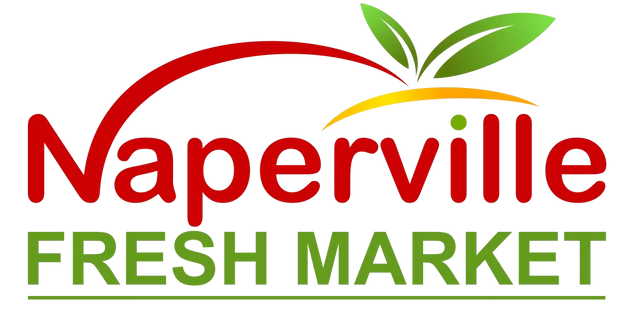Selecting the right international market near Naperville can shape your home cooking all year long. The best fit for you will offer fresh produce, a thoughtfully curated spice and sauce selection, helpful staff, and a layout that makes exploration inviting rather than overwhelming. Whether you are seeking specialty items for treasured family recipes or you are starting to experiment with global flavors, a few practical criteria will help you find your go-to store. As you begin your search and plan sample shopping lists, glance at local weekly deals to understand which products are being highlighted and to spark ideas for what to cook.
Define Your Priorities
Start by writing down what matters most to you. Are you looking for the widest variety of spices? Do you want a market with a robust produce section that emphasizes freshness and seasonality? Are ready-to-cook items important for busy nights? Your priorities become a checklist for comparing stores.
Evaluate Produce Quality
Walk the produce section with a keen eye. Look for vibrant color, balanced moisture, and clean displays. Ask staff which items just arrived and which are best for your planned recipes. A strong produce section suggests good turnover and careful sourcing, which supports better flavor at your table.
Assess Spice and Sauce Selection
Examine the spices for variety, packaging, and turnover. Whole seeds, ground spices, and blends should be well-labeled and neatly organized. Sauces and condiments should span mild to bold flavors and represent multiple regions. When a store carries both familiar brands and a few specialty labels, you gain options for different taste preferences and recipes.
Check Meat, Seafood, and Specialty Counters
Visit the service counters to see what cuts are offered and how staff engage with questions. Many international markets provide cuts tailored to specific cuisines, which can simplify your cooking. Friendly, knowledgeable staff can recommend alternatives if something is not available and share preparation tips for best results at home.
Browse Freezer and Refrigerated Aisles
Ready-to-cook items, fresh noodles, cultured dairy, and fermented vegetables can elevate weeknight dinners. A well-maintained cold section with clear labeling and tidy organization suggests good care and consistent restocking, both of which make for a better shopping experience.
Look for Clear Organization and Signage
Strong signage helps you find items quickly and discover new products without feeling lost. Some markets group items by region or cuisine, which is especially helpful if you are cooking a themed meal or learning a specific set of dishes.
Gauge Staff Knowledge and Hospitality
Approachable staff who can explain the difference between similar products offer enormous value. When you are trying a new ingredient, thoughtful guidance can turn uncertainty into confidence. Consider how comfortable you feel asking questions and how clearly the team communicates cooking tips.
Consider Store Size and Layout
Larger stores may offer more variety, while smaller boutiques can deliver a curated selection with deep expertise. Decide which environment suits your shopping style. Look for a layout that flows naturally from produce to counters to aisles and on to freezer and refrigerated sections.
Evaluate Cleanliness and Maintenance
Clean floors, tidy displays, and well-lit cases are signs of a store that takes care of its inventory and its customers. A clean environment also helps you assess product quality at a glance and feel confident about your selections.
Community and Cultural Connection
International markets are often community hubs. Ask about events, tastings, and holiday highlights that bring people together. Markets that engage with local communities often carry seasonal specialties and beloved regional items that reflect the cultures they serve.
Trial Shop With a Sample List
Bring a short list and walk the store. Can you find everything? Did you discover any pleasant surprises? Are prices clearly labeled and items easy to compare by brand and format? A trial run reveals how the store functions day to day and whether it meets your needs across several cuisines.
Compare Similar Products
When two brands of the same item catch your eye, read the ingredient list and note the order of ingredients. This will tell you about flavor intensity and balance. Choose a smaller size for your first test and keep notes on taste, texture, and performance in your recipe. Over time, you will build a personal preference list of go-to brands.
Parking, Hours, and Convenience
Practical considerations matter. Ensure the store’s hours align with your schedule. Check for convenient parking or public transit access. If you like to shop during quieter periods, identify times when the store is calm so you can browse and ask questions without feeling rushed.
Online Presence and Communication
Some international markets share updates about new arrivals, seasonal specialties, and in-store highlights. Staying informed about rotating features helps you plan recipes and vary your weekly menu. If you prefer to preview what might be highlighted before visiting, skim local weekly deals and make a short list that suits the moment.
Special Diets and Allergen Awareness
If you need vegetarian, vegan, or gluten-conscious options, evaluate labeling clarity and how staff respond to questions. A market that understands dietary needs can help you shop efficiently and safely, suggesting suitable substitutions when necessary.
Freezer Friendliness and Batch Cooking
Consider how well the store supports batch cooking. Look for family-sized packs of grains, legumes, dumplings, and flatbreads that divide easily into portions. A good selection of freezer-friendly items lets you plan ahead for busy weeks without sacrificing flavor.
Education and Recipes
Some markets post cooking tips or offer simple recipes near featured ingredients. These educational touches help newcomers learn quickly and encourage you to try a new dish with confidence. Look for stores that actively share knowledge to support your kitchen growth.
What to Bring on Your First Visit
- Reusable bags and small containers for bulk items.
- A cooler bag for perishables if you have a long ride home.
- A concise list grouped by category or cuisine.
- Space in your plan for one discovery item to keep the experience fun.
How to Judge a Market After One Month
Commit to visiting your top two or three contenders at least twice. Track freshness, selection, and how your cooking week turns out. If you consistently find what you need, enjoy the flavors, and feel comfortable seeking help, you have likely found a great match. If not, keep exploring—Naperville’s variety means there is probably a store better aligned with your kitchen style.
Red Flags to Watch
- Confusing or missing labels on sauces and spices.
- Repeatedly wilted herbs or damaged produce.
- Unclear storage temperatures in refrigerated or freezer sections.
- Difficulty getting basic questions answered.
- Persistent disorganization that makes shopping frustrating.
Frequently Asked Questions
Q: How do I choose a market if I cook many different cuisines?
A: Look for a store with broad regional coverage and strong signage. Alternatively, use two complementary stores—one for produce and staples, another for specialty spices and sauces.
Q: What if I am overwhelmed by the selection?
A: Shop with a theme and a short list. Limit yourself to one or two discovery items per visit so you can learn new ingredients without overcomplicating meals.
Q: How important is staff expertise?
A: Very. Helpful staff shorten your learning curve, suggest substitutes, and recommend brands based on taste preferences.
Q: Can I find ready-to-cook items for weeknights?
A: Yes. Many international markets carry dumplings, buns, flatbreads, and marinated proteins that make quick dinners satisfying and diverse.
Q: How do I track my favorite brands?
A: Keep notes on your phone with brand names, flavor notes, and which dishes they excel in. Over time, you will build a personalized shopping guide.
Q: What is the best way to compare similar sauces?
A: Read ingredient lists, note whether a sauce is concentrated, and ask staff about typical uses. Buy smaller sizes first to test.
Find Your Best-Fit International Market
Use these criteria to evaluate your options thoughtfully. Visit a few stores, ask questions, and trust your senses as you compare freshness, organization, and selection. When you are ready to plan a cooking week around what is highlighted locally, check weekly deals, make a simple list, and enjoy discovering the market that brings global flavor to your Naperville kitchen.




